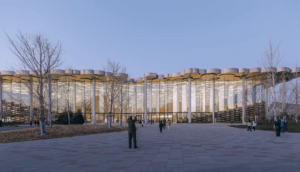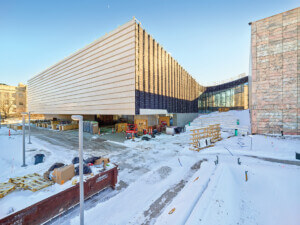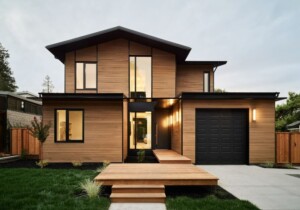| Brought to you by: |
A preview of the collaboration behind the entryway to Ras Al Khaimah
Snøhetta’s 656-foot-tall Gateway tower, 93 miles east of Dubai, will mark the entrance to the new planned capital city of the United Arab Emirates, Ras Al Khaimah. Inspired by the surrounding desert and mountain landscape, the project’s undulating form will bring almost 3 million square feet of mixed-use space to the city, which is being master planned by Netherlands-based firm OMA. Snøhetta has designed a prototype of the building’s white-scaled skin in collaboration with Dubai-based lightweight composite manufacturer Premier Composite Technologies (PCT).
- Fabricator Premier Composite Technologies
- Architect Snøhetta
- Location Ras Al Khaimah, UAE
- Status Prototype
- Materials Glass fiber and epoxy resin composite, structural foam, glass, ceramic
- Process CAD-CAM design, CNC mold-making
The RAK tower, which is slated to hold a hotel, will be structurally clad with prefabricated panels attached to its concrete slabs without additional substructure. The design requires panels to be insulated and include the external skin as well as internal doors, windows, and a grid for a plasterboard interior finish. More than 1,000 panels will be needed to realize the design, but Snøhetta and PCT began with one 26-by-13-foot prototype. The design plays to efficiency: Finished panels clad with geometric ceramic shapes will be hoisted onto the tower by crane and connected to each other with a watertight bolted connection to save money and time; a composition of glass fiber and epoxy resin composite surrounding a structural foam core and insulation is designed for decreased solar heat gain.
Because the tower rises and twists from lower, horizontal forms at its base, the panels must have a complex bi-axial shape, so using easily moldable composites made sense from a design standpoint as well. PCT uses a 5-axis milling machine to create molds with multiple-axis forms and intricate shapes. Snøhetta worked with PCT’s design engineers to develop the RAK Gateway’s conceptual facade designs, analyzing 3-D images for structural performance. The team then translated CAD files into CAM files to manufacture molds. The components, which are laminated on the CNC-milled molds and oven-cured under a vacuum, have a tolerance of less than 1 millimeter. Holes are also molded into each element, ensuring accurate placement of attachments before the panels ever reach the building. As part of the collaboration, Snøhetta translated the Gateway’s shapes into a design for PCT’s booth at 100% Design London. Watch architect Thomas Fagernes discuss the design below in a video about PCT:
Video courtesy RIBAJournal.com










